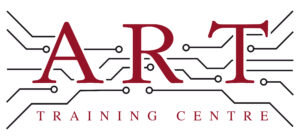Definition
Desoldering is the process of removing solder from electronic components or circuit boards, typically to repair or replace parts. It is a crucial component in electronics manufacturing and rework, allowing technicians to correct faults or upgrade devices. This process requires specific tools and techniques to ensure that the components and the printed circuit board (PCB) remain undamaged during removal.
How It’s Used in the Industry
Desoldering is commonly applied in electronics assembly and repair, particularly with printed circuit boards (PCBs). The process typically involves heating the solder joint with a soldering iron, then using a desoldering pump or solder wick to remove the molten solder. Technicians may perform desoldering to replace faulty components or to modify circuit designs. This skill is essential for both trainees and experienced professionals, as it helps maintain the integrity and functionality of electronic devices. Understanding desoldering techniques is vital for ensuring quality and reliability in electronic manufacturing.
History & Origins
Desoldering techniques became common in electronics manufacturing during the mid-20th century, coinciding with the rise of printed circuit boards. As electronic devices became more complex, the need for efficient repair methods grew. The development of standards, such as those set by IPC (Institute for Printed Circuits), further established best practices for soldering and desoldering. Advances in technology, including the introduction of specialized tools, have made desoldering an essential skill in modern electronics assembly and repair.
Variations
There are several variations of desoldering methods, including manual desoldering with soldering irons, the use of desoldering pumps, and solder wick. Each method has its advantages; for instance, solder wick is effective for removing solder from tight spaces, while desoldering pumps can quickly clear larger solder joints. Compared to soldering, which joins components, desoldering focuses on separation, making it a distinct yet complementary process in electronics repair and assembly.
Modern Applications
Today, desoldering is essential in electronics production and repair, particularly with surface mount and through-hole technologies. It plays a critical role in maintaining quality and reliability in electronic devices, ensuring compliance with IPC standards. As technology advances, desoldering techniques continue to evolve, making it a vital skill for technicians involved in advanced assembly processes and electronic device maintenance.
Practical Tips & Training
When working with desoldering, always prioritise safety by wearing protective eyewear and working in a well-ventilated area. Using quality tools, such as desoldering pumps and solder wick, can greatly improve efficiency. Regular inspection of components and PCBs is crucial to avoid damage during the process. Structured training and certification in electronics can enhance understanding of desoldering techniques, ensuring technicians are well-prepared to meet industry standards.


